Table of Contents
ToggleIf you’re responsible for top-notch quality management in your organization amidst the economic downturn, high competition, supply chain disruptions, etc., you must have a Lean Six Sigma Black Belt certification. Word-of-mouth might inspire you to get this certification, but you must be aware of the features and benefits of a Lean Six Sigma Black Belt certification to understand if it suits your needs. Today, we’ll discuss the top reasons to become a certified Lean Six Sigma Black Belt professional.
What is a Black Belt Lean Six Sigma Certification?
The Lean Six Sigma, Black Belt certification, is designed to provide professionals with advanced skills and expertise in the realm of process improvement and optimization. Participants undergo comprehensive training in Lean and Six Sigma methodologies, acquiring proficiency to lead intricate improvement projects. Certified Six Sigma Black Belts often take on leadership roles in process improvement initiatives and may hold positions in management, analysis, or planning across different departments within a company.
At the Black Belt level, there is a strong emphasis on developing a thorough understanding of statistical tools, analytical techniques, and project management strategies. Individuals enrolled in this certification program learn to identify areas for improvement, implement effective solutions, and ensure the sustainability of positive changes within an organization.
Benefits of Lean Six Sigma Black Belt Certification
Black Belt professionals are experts in all five phases of the DMAIC model of Lean Six Sigma Principles:
- Define
- Measure
- Analyze
- Improve
- Control
Besides, there are major other benefits that you’ll enjoy once you earn this certification. Let’s analyze how a Black Belt Lean Six Sigma Certification will enhance the company you’re working for and also yourself.
How will Lean Six Sigma Black help your organization?
1. Leading the Quality Management Team
Certified Lean Six Sigma Black Belt professionals are experts in reducing costs, increasing revenue, streamlining business processes, and improving employee buy-in, all of which lead to a better bottom line. A quality management team has Lean Six Sigma professionals from the green and yellow belts as well. If you’re a skilled Black Belt certified, you’ll be responsible for defining projects for Green Belts and Yellow Belts. You will get the opportunity to mentor and guide Green Belts and Yellow Belts in the completion of their projects. In a nutshell, the organization will achieve success and stay consistent in its goal to maintain the overall quality efficiently.
2. An Environment of Continuous Improvement
Businesses often encounter crises that become hindrances to their way to success. For the record, keeping up with the market trend and growth graph in such scenarios is often taxing. When incorporating Lean Six Sigma Black Belts into your organization, you are expressing a clear commitment to prioritizing improvement within the business.
The presence of individuals holding a Black Belt signifies the capability to instill a culture of continuous improvement throughout the organization. These professionals possess the skills to communicate effectively at all levels of the business, coach others in the methodology, and intervene strategically to bring about lasting and meaningful change. This commitment not only benefits customers but also contributes to the overall success and enhancement of your business operations.
3. Facilitating Effective Communication Across Teams
A Lean Six Sigma Black Belt improves communication at all levels in an organization through standardized language, transparent reporting on project progress, fostering cross-functional collaboration, providing training, aligning projects with strategic goals, creating feedback mechanisms, managing change communication, and emphasizing a customer-centric perspective. By serving as effective communicators and facilitators, Black Belts ensure a shared understanding of improvement initiatives and contribute to a culture of continuous improvement.
4. Project Updates and Reporting
Lean Six Sigma Black Belts enhance Project Updates and Reporting by selecting comprehensive metrics, maintaining regular and transparent communication, utilizing visual management techniques, conducting root cause analyses, aligning with organizational goals, engaging stakeholders collaboratively, managing risks proactively, and incorporating a continuous improvement feedback loop. Through these practices, Black Belts contribute to a robust reporting framework that aids informed decision-making and drives successful project outcomes.
5. Collaborating with Stakeholders
Lean Six Sigma Black Belt professionals play a pivotal role in regulating Stakeholder Engagement and Collaboration within an organization. By actively involving stakeholders at various levels, Black Belts ensure that diverse perspectives are considered in the decision-making process. They facilitate open communication channels, seeking input and feedback to enhance the relevance and effectiveness of improvement initiatives. Black Belts engage stakeholders collaboratively, fostering a sense of ownership and commitment to the project’s success.
Through workshops, meetings, and regular updates, they create opportunities for dialogue, ensuring that stakeholders not only receive information but also have a platform to express their concerns and insights. This collaborative approach not only strengthens the alignment of improvement projects with organizational goals but also builds a culture of continuous improvement where stakeholders feel valued and engaged in the overall success of the organization.
How will Lean Six Sigma Black Belt add Value to your Career?
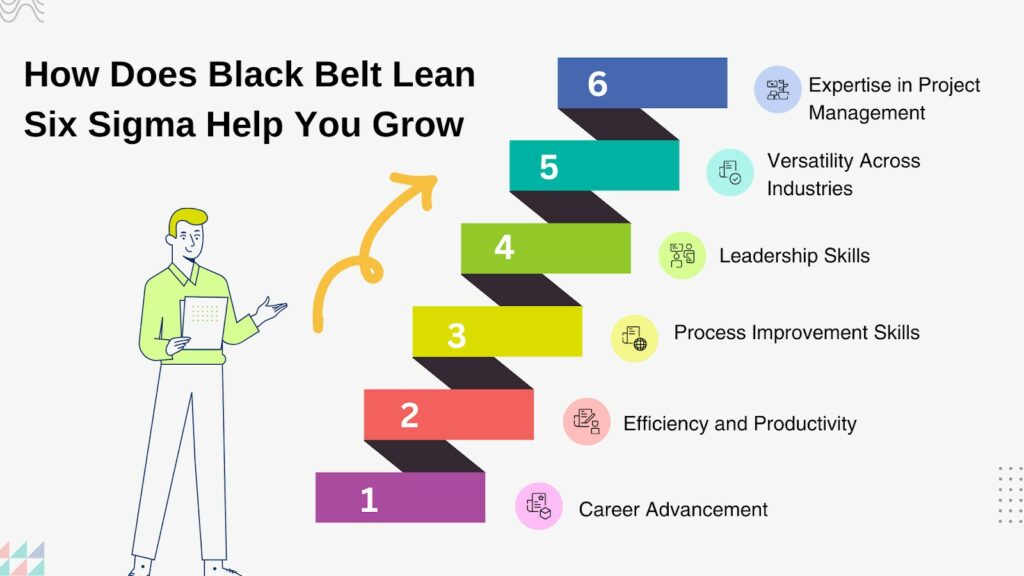
1. Expertise in Project Management
The Lean Six Sigma Black Belt certification signifies proficiency in project management tools and techniques. Utilizing data-driven reviews, Black Belts can effectively identify and minimize defects and waste in various processes, leading to improved production speed and overall efficiency.
2. Versatility Across Industries
Originally rooted in manufacturing, Six Sigma methodologies have transcended industry boundaries. Professionals certified as Lean Six Sigma Black Belts demonstrate the ability to apply these principles in diverse sectors such as finance, healthcare, engineering, and construction, showcasing the versatility of their skills in optimizing business processes.
3. Leadership Skills
As leaders of improvement projects, Lean Six Sigma Black Belts play a crucial role in guiding teams and allocating roles based on individual capabilities. The certification not only validates their expertise in process improvement but also enhances their leadership skills, empowering them to effectively lead groups toward achieving project goals.
4. Process Improvement Skills
Black Belts are equipped with substantial knowledge in process improvement and deviation control. This expertise enables them to analyze, streamline, and enhance business processes, contributing to a more comprehensive understanding of organizational workflows.
5. Efficiency and Productivity
Certified Lean Six Sigma Black Belts actively execute Six Sigma projects, monitor outcomes, and lead quality improvement initiatives. Their contributions have a tangible impact on company-wide productivity, ensuring that processes are streamlined for optimal efficiency.
6. Career Advancement
Six Sigma certification, particularly at the Black Belt level, serves as a valuable asset for career advancement. It provides professionals with practical experience in project management, making them stand out as valuable assets to employers seeking individuals with a proven track record in driving process improvements.
Career Opportunities for Certified Lean Six Sigma Black Belt Professionals
The career opportunities for certified Lean Six Sigma Black Belt professionals are diverse and span various industries.
1. Process Improvement Manager/Director
Lean Six Sigma Black Belts are well-suited for roles overseeing process improvement initiatives within organizations. They lead teams, identify inefficiencies, and implement strategies to optimize workflows, ultimately enhancing operational efficiency and productivity.
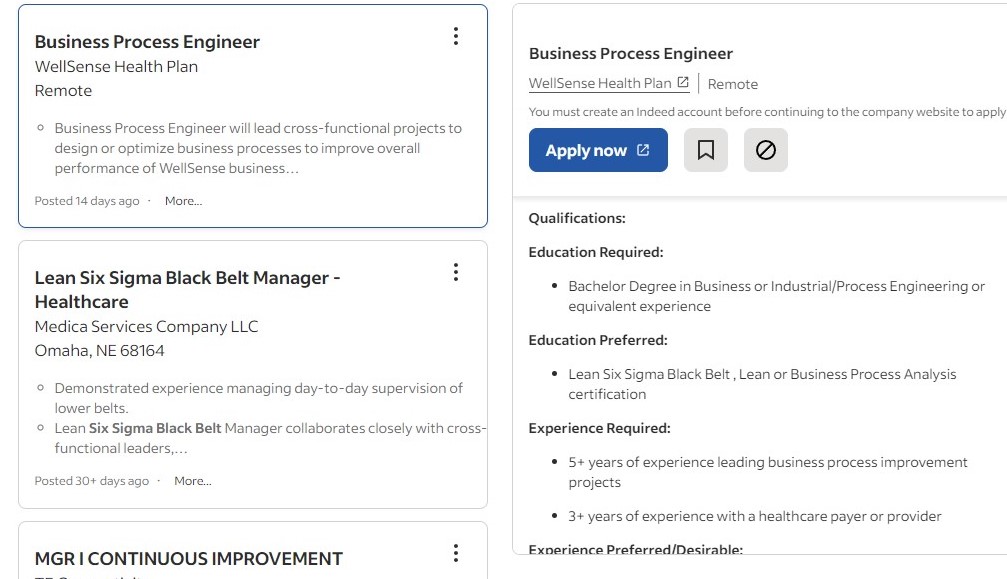
2. Quality Manager/Director
Professionals with Lean Six Sigma Black Belt certification often find roles as quality managers or directors. They are responsible for ensuring adherence to quality standards, implementing quality improvement programs, and leading initiatives to enhance overall product or service quality.
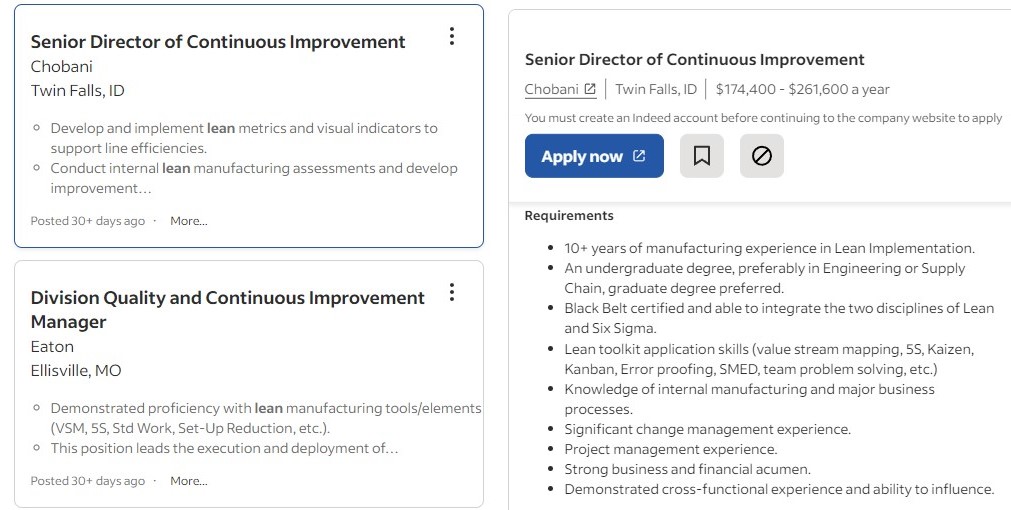
3. Operations Manager/Director
Black Belts are equipped to take on leadership positions in operations management. They can oversee the end-to-end operational processes, identify areas for improvement, streamline workflows, and implement strategies to increase efficiency and reduce costs.
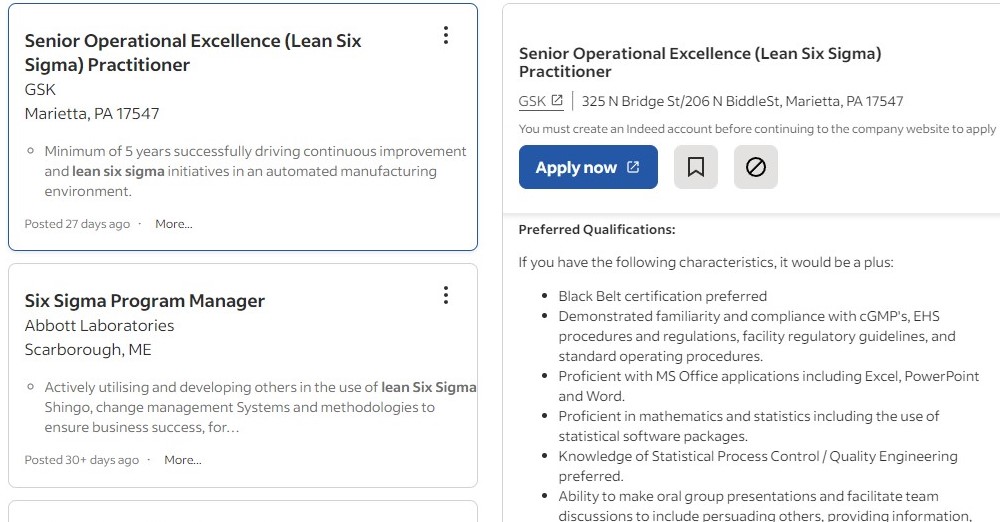
4. Supply Chain Manager/Director
In the realm of supply chain management, Lean Six Sigma Black Belts contribute by optimizing processes, reducing lead times, and enhancing overall supply chain efficiency. Their skills are valuable for minimizing waste and improving the reliability of supply chain operations.
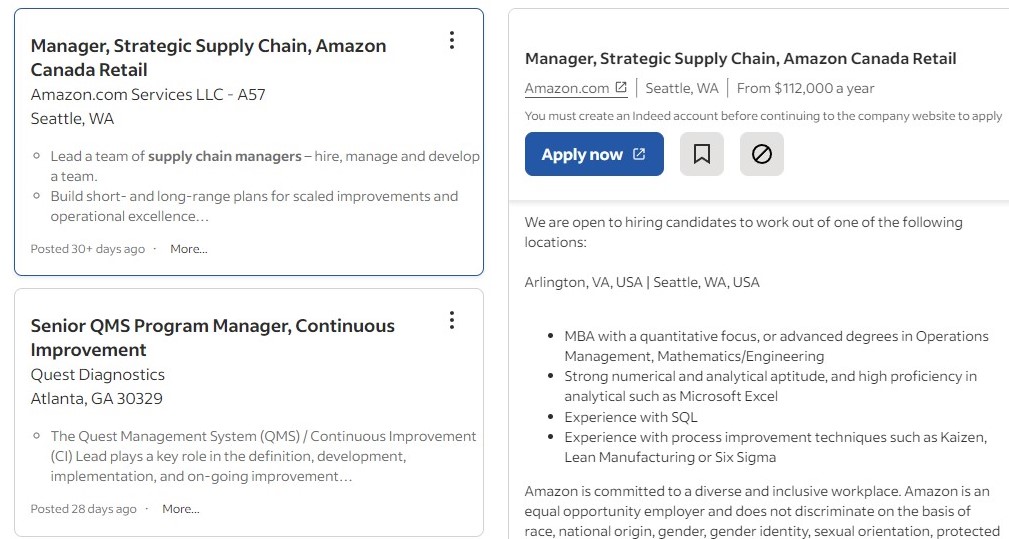
5. Continuous Improvement Manager/Director
Black Belts are well-suited for roles focused on continuous improvement. They lead and manage initiatives that promote an ongoing culture of improvement within the organization, ensuring that processes are continually refined to meet evolving business needs.
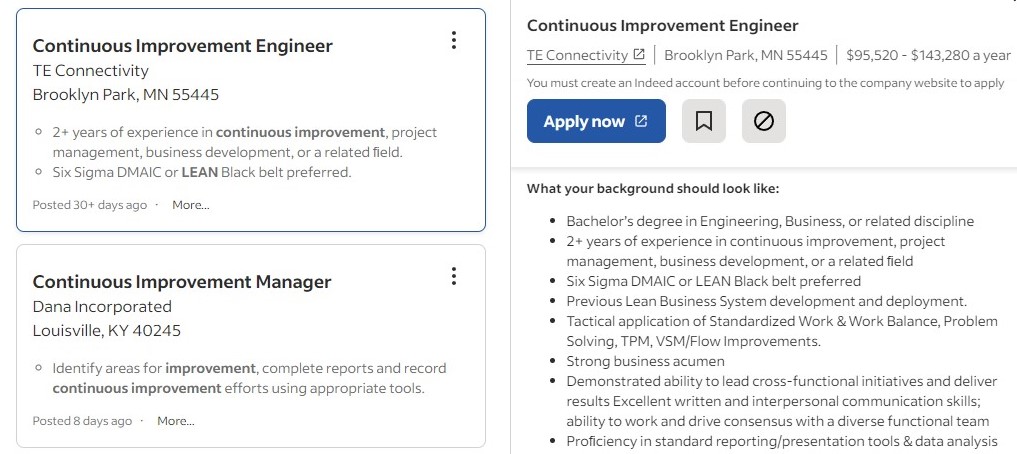
6. Consultant
Many certified Lean Six Sigma Black Belts choose to work as consultants, either independently or with consulting firms. They offer their expertise to organizations seeking assistance in process optimization, efficiency improvements, and overall performance enhancement.
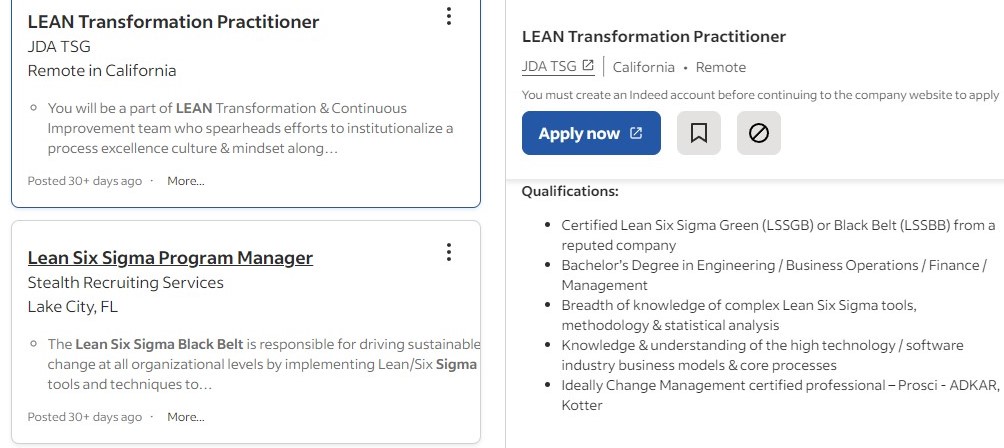
7. Project Management Roles
The certification provides a strong foundation in project management, making Black Belts suitable for various project management roles. They can lead complex projects, coordinate teams, and ensure successful project delivery.
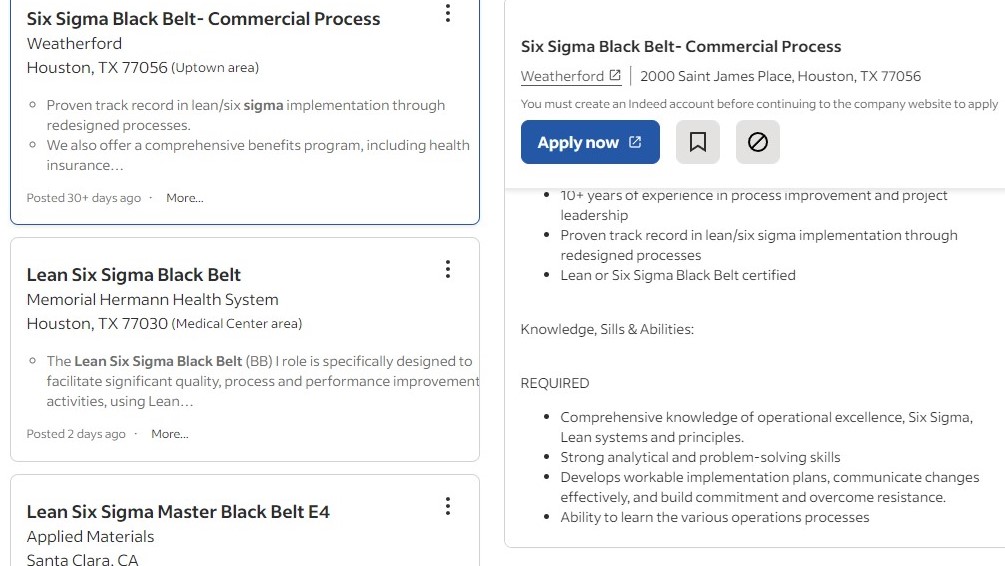
8. Change Management Specialist
Black Belts excel in managing change within organizations. They can take on roles as change management specialists, helping organizations navigate transitions, implement new processes, and ensure that changes are well-received and effectively adopted.
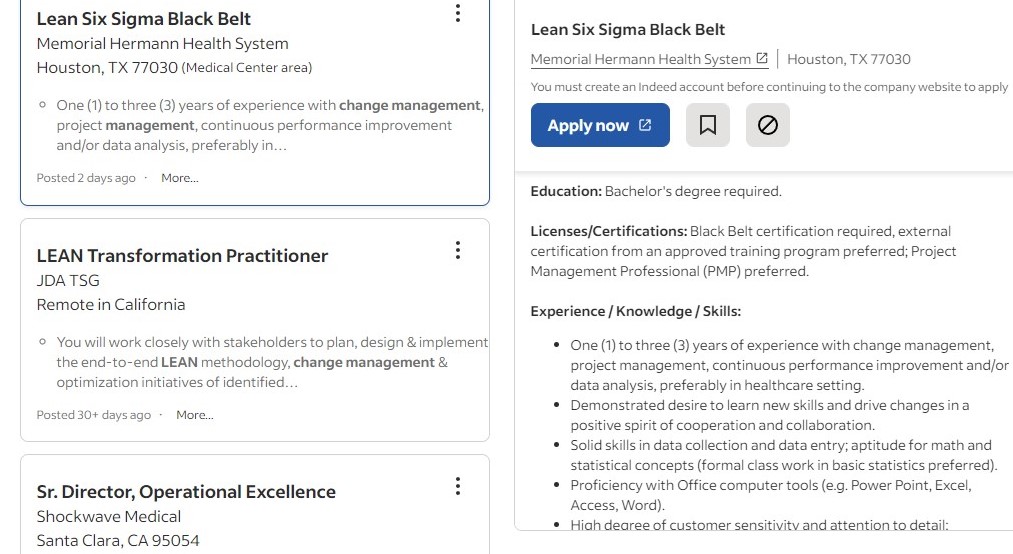
9. Healthcare Quality Improvement Roles
In the healthcare industry, Lean Six Sigma Black Belts contribute to improving patient care, reducing errors, and enhancing overall healthcare quality. They may work in roles such as quality improvement managers or directors within healthcare organizations.
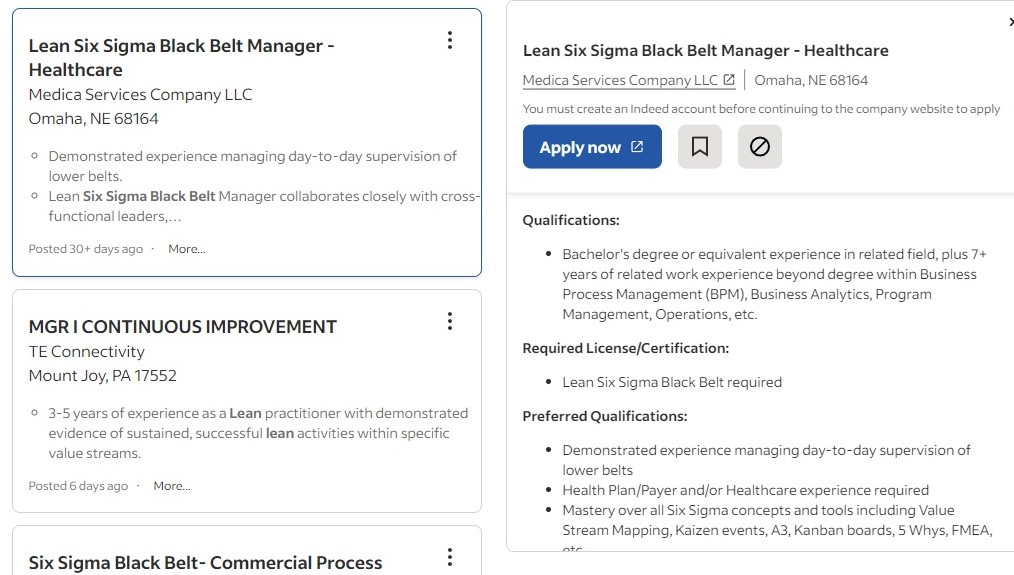
Conclusion
In conclusion, the Lean Six Sigma Black Belt job responsibilities represent a critical nexus of leadership and expertise, collaborating seamlessly with diverse stakeholders across key operational areas. The commitment to a holistic Lean Six Sigma approach underscores a dedication to continuous improvement within the organization’s core processes. But, if you do not have the required experience or knowledge of Lean Six Sigma programs, then you can get started with Lean Six Sigma Yellow Belt training and Lean Six Sigma Green Belt training to gain the required knowledge and then take up Lean Six Sigma Black Belt certification course to get ahead in your career.
Overall, the Lean Six Sigma Black Belt certified professional is a linchpin in driving operational excellence, embodying a strategic blend of skills, experience, and adaptability to lead the organization toward sustained success.
